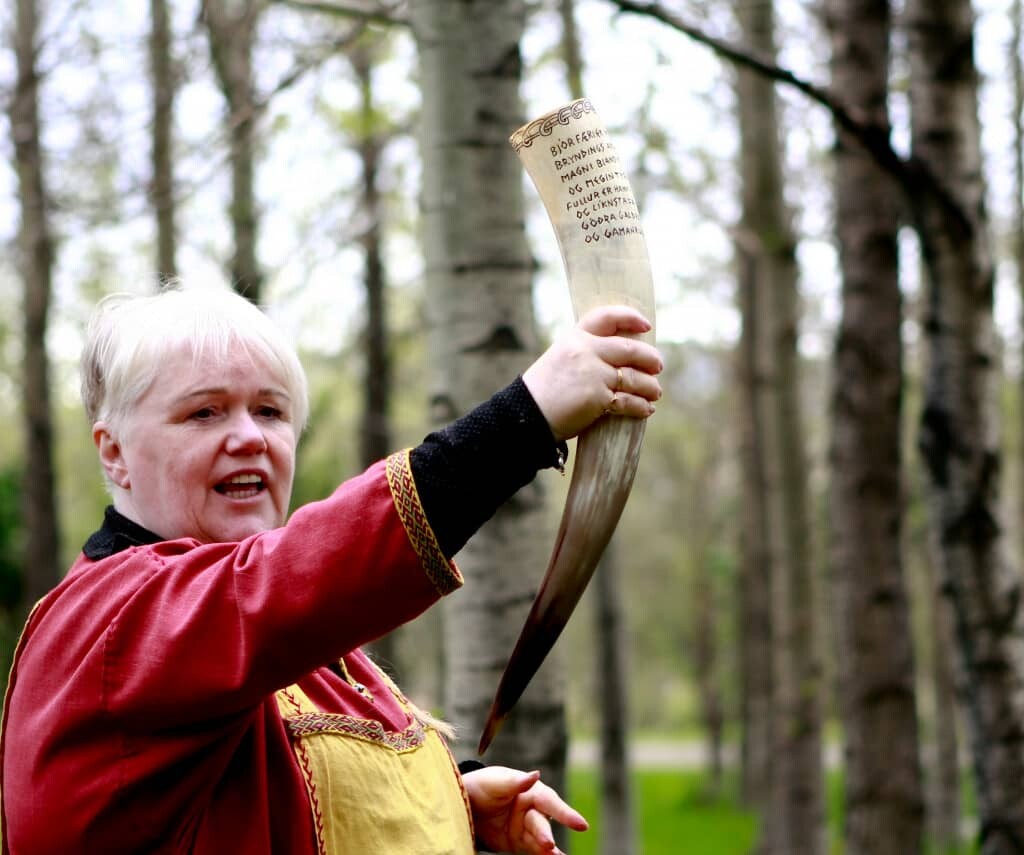Before Scandinavia converted to Christianity, the ancient Viking religion known as “Asatru” was based on similar principles. The Asatruar are its practitioners. The Icelandic Assembly did not recognize Asatru as a religion until 1973.
Asatru Religion — Germanic Neopaganism
Today there are several hofs, temples and cemeteries throughout Iceland for followers of Asatru. This philosophy has been gaining ground in several nations, especially in northern Europe.
Asatru
Asatru, which is short for “trust in the lord,” the Viking gods, came to denote this. It is a polytheistic religion with roots in the ancient ceremonies and creeds of the Norse peoples that have been revealed by researchers.
The Sir and the Vanir are part of the pantheon of this religion. It is worth mentioning that the Vanir gods, which are deities that place a strong emphasis on nature, are worshipped in a version of the Vanatr.
Although they recognize that their gods are not “perfect,” the Asatruar maintain a close relationship with nature and uphold a strict moral code. These are the nine noble virtues that make up this code:
- Courage
- Truthfulness
- Honor
- Integrity
- Hospitality
- Diligence
- Discipline
- Integrity
- Persistence
There is respect for the ancestors and a belief in the Spirit of the Gods, a kind of eternal soul that lives on after the death of the body. According to the Asatru belief, the universe will come to an end when the gods disappear and a new and better cosmos is created.
Who can practice “Asatru”?
This religion is closely related to the northern European nations. However, to be an Asatruar it is not necessary to have a Germanic heritage or meet any other racial requirements. This explains why communities can be found on all continents.
For example, the European Odinist Circle, also known as the Odinist Community of Spain-Asatru, is located in Spain. It was founded in 1981 and is based in Navas de Jorquera (Albacete).
It claims that the Germanic tribes that settled in the Iberian Peninsula, including the Visigoths, are its ancestors. In 2007, the Spanish government recognized the status of religion and granted permission to celebrate weddings. The number of Spanish Asatruar was estimated at 10,000 in a 2014 census.
In addition, there is no hierarchy of religious authorities in the “Asatru” because the organizations are organized locally. The rites are led by priests called Go’i. Although several stories and customs direct the faith and conduct of this religion, there is no sacred book as such.
Asatru Rituals and Ceremonies
The blót, modeled after early Viking sacrifices, are the best-known ceremonies of the Asatru. Four blót are held each year, during which people visit the forest to make offerings to the land in honor of the gods.
People converse about ancient Norse stories while drinking beer or mead from the horns at these gatherings around bonfires. Among the most significant Asatru celebrations are the following:
- Thorrablot (January 19). To celebrate Thor and prepare for the end of winter, a feast is held.
- Ostara (March 21). (March 21). The goddess Ostara celebrates the return of life after winter. It also falls on the spring equinox.
- Walpurgis (April 30). The nine nights between April 22 and 30 honor the nine days Odin spent hanging from the Yggdrasil tree to learn the meaning of the runes.
- Sunnamenoþs (June 21). A celebration in honor of Bálder that marks the summer solstice.
- Freyfaxi (August 1). In celebration of the goddess Sif, Vetrnaetr, there is a harvest festival (October 31). It is dedicated to the Dsir, a group of fertility spirits led by Freya. The ancestors are remembered.
- Yule (December 21). The most significant day of the year, a festival celebrated in honor of Frey represents the victory of the Sun over Darkness. It coincides with the winter solstice.
These hours apply to the northern hemisphere and are approximations. The lunar and solar cycles are essential to the celebrations, as in the ancient Viking calendar. On the other hand, the Asatruar also recalls historical details about the religious persecution of paganism in Viking times.
With information from barcovikingo.com





